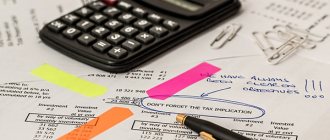Bookmarked: 0
Consumer basket
During a crisis, there is a decline in consumer demand and purchasing power. To understand the current economic situation and start with your business idea, you need to study basic business terminology and understand what today's consumer really needs. Supply and demand are two main quantities used by economists, marketers, and businessmen. A startup, before starting to work on bringing his idea to life, must know what the demand will be for the goods that he is going to offer to his potential clients in a goods store or on an Internet site.
Before you begin to understand the different classifications of demand, you need to understand where it begins. Each of us is a consumer of some goods. The total set of products that we use every day is called the consumer basket.
Thus, the standard consumer basket includes such items as:
- basic food products (socially significant products);
- non-food products (linen, medicines, household items, clothing);
- services (transport, etc.).
Volume of the consumer basket for 2014
Demand Fluctuation
On video: Demand and price, laws of demand
Demand, as one of the most important components of market relations, demonstrates the level of population’s need for a particular product or service.
Demand, price and supply are the fundamental elements of building a mechanism of market relations between those who offer a product and those who, accordingly, need it. Commodity-money relations can be built on the basis of purchase, sale or exchange of goods/services. Under the direct influence of demand, price and supply, units of production and consumption of certain goods are formed. The price of a product is an indicator of the relationship between supply and demand.
The basis of consumer demand has been and remains the basic and additional needs of citizens. The absence of these makes it impossible for demand, supply and market relations in general to emerge. The expression of demand as the total volume of sales of goods or services that will be purchased at a specific price over a certain period of time is carried out in monetary terms. It is important that this equivalent is determined mainly by the consumer, who has the opportunity and desire to purchase the product at a certain price.
Pyramid of needs
Demand classifications
Individual and market demand
Individual (personal) demand demonstrates the needs and capabilities of individual citizens, market demand demonstrates total indicators from the point of view of all potential buyers of a particular group of goods.
Groups of factors that directly influence the formation of demand
Consumer demand and production demand
Consumer demand is the demand for consumer goods, production demand is the effective demand for factors of production.
The first is directly dependent on the income received by the population, as well as the potential ability of banks to issue loans. This type of demand shapes public tastes and preferences. To create commodity-money relations, the environment in which the process of buying, selling or exchanging goods takes place is important.
Types of media
An open market environment is characterized by certain conditions that ensure the smooth process of entry of new enterprises into the market and free exit from it. Such an environment is considered the most favorable and optimal for conducting business processes in a particular market of goods/services or in a certain geographical location.
A closed market environment is regulated by various kinds of regulations, which can create conditions for new enterprises to enter the market. This may include legislative acts that are responsible for quotas, licenses, customs duties, etc. Developed economies of the world community have established government support systems for domestic producers.
A competitive market environment is characterized by the presence of an abundance of goods of a certain type; in such conditions, the consumer can choose between several offers from different manufacturers. At the same time, all conditions have been created for unhindered, comfortable competition and effective mechanisms for regulating demand, supply and pricing policy have been launched. According to experts, such an environment is most optimal for the development of private entrepreneurial activity.
Controlled external environment . It is characterized by strict control by the state, manifested in the presence of a rigid planning and distribution system designed to regulate and control the activities of the enterprise.
Commercial activities, which are aimed at developing business and achieving certain positive results, as well as certain commercial risk factors, are almost completely suppressed, while only the distribution and exchange function of commercial activity is available. In this case, the buyers themselves can act as competitors.
Factors influencing demand
To determine what is in demand among the population on the market, you must first analyze several important factors that influence the demand for a product or service:
- Price. As a rule, first of all, the consumer asks the seller how much the product costs. If the price matches the quality, the buyer will pay money for it. To correctly formulate the cost of a product, you need to take into account the cost of the product, its purchase price, markup percentage and pricing strategy. To emphasize the exclusivity of a product, you can inflate its price, collect the maximum profit from sales, and then bring it in accordance with the market price. This strategy can only be chosen if you are confident that you are offering customers an in-demand product. You can also use a strategy based on temporarily lowering the price. In order not to scare off the buyer, you need to explain to him that you are selling a cheap, high-quality product only in order to attract the attention of consumers to it;
- Competitors' prices. This is a very important factor that has a great impact on demand. Buyers perceive low and high prices with suspicion, so it is important to find a “golden mean” and show the consumer the main advantages of the product. The experience of competitors and their pricing strategy can help you with this;
- Buyers' income. If you live in a small town where the income level of the population does not exceed 18-20 thousand rubles, it makes no sense to open a fur shop or an expensive beauty salon there;
- Buyer preferences. When creating demand, it is necessary to take into account what sells well during a crisis and in conditions of economic stability. You also need to thoroughly research the market to understand which product sells best in your region. For example, if pork is quickly sold out at the market, you should not put beef or lamb on the counter;
- If you regularly use the laws of demand generation, you can significantly identify your competitors and get excellent results.
Classification of demand by degree of satisfaction
The mechanisms of commercial transactions imply the presence and influence of various forms of manifestation of consumer demand. It is necessary to understand the client’s motivation for the decision to purchase or sell a product.
Demand by degree of satisfaction: real, satisfied and unsatisfied demand.
- Real demand is a unit of goods that was sold over a certain period of time. In this case, the size of the actual sales of goods is expressed in cost or physical indicators.
- Satisfied (or realized) demand is the main segment of need, which is characterized by solvency. This unit is less than the actual demand by the amount of unsatisfied demand.
- Unsatisfied demand is a need for a product that has not been satisfied for a number of reasons. This may be a price that the consumer is not able to pay, the lack of a product on sale, or unsatisfactory quality.
Results
Products are divided according to production method into agricultural, industrial and natural. The area of sales includes trade, as well as retail trade included in it, which includes: loading, delivery, sales, consultations with sellers.
Product classification is a necessary process for determining various operational characteristics, studying productivity data in different areas. All manufactured products, thanks to classification, are subject to standardization and certification in the prescribed manner.
Types of Unmet Demand
- Explicit
The buyer has the opportunity to purchase the goods, but does not do so for a number of reasons.
- Hidden
The product purchased by the buyer does not meet his requirements or is not an interchangeable product for which the need originally arose.
- Deferred
In other words, the purchase of a product is postponed due to its high cost (apartment, car, large household appliances) or a purchase dedicated to a specific holiday or celebration
On video: Lecture on market demand
Determining consumer demand
Definition 1
Consumer demand is the amount of demand for consumer goods in a certain time period. With an increase in consumer demand, i.e. with an increase in the number of “consumer votes” cast for a product, the profits of the industry producing these products increase. The key to consumer demand is its ability to determine what to produce to make an industry profitable.
Demand is an umbrella term that describes the behavior of both potential and actual buyers of goods.
Effective demand is expressed in the demand for goods presented on the market, which is determined by the quantity of a particular product that consumers are able to purchase at current prices and income levels.
The volume of a specific product that an individual buyer or a group of buyers, or society as a whole, wants to purchase is determined as the quantity of products for which there is demand (the magnitude of demand). This quantity does not always coincide with the quantity of goods actually purchased by the buyer. The volume of demand is determined over a certain period of time (per day there is demand for one quantity of product, per month for another, etc.) and for a specific number of consumers.
Finished works on a similar topic
- Course work Consumer demand market 410 rub.
- Abstract Consumer demand market 280 rub.
- Test work Consumer demand market 230 rub.
Receive completed work or specialist advice on your educational project Find out the cost
The quantity of products demanded depends on the following factors:
- Prices of goods and services;
- Consumer income;
- Buyer preferences;
- Income distribution between households;
- Prices for substitute goods;
- The total number of buyers of this product or service;
- Inflation expectations.
How is consumer demand generated?
Non-price factors that have a certain degree of influence on the level of consumer demand:
- fluctuations in the level of income received by the population;
- changes in the price level for interchangeable goods;
- economic policy of the state;
- changes in personal preferences of consumers.
Classification of consumer demand by frequency of occurrence
Signs of classification
In addition to the types of consumer demand, there are also classification criteria, depending on which consumer demand is determined.
For example, depending on the degree of intensity of demand, it can be intense, stabilized or fading. Intensive means growing at a high rate. These may be new products, or high-quality ones that already have a good reputation.
Stabilized demand may remain at the same level for a long time or grow at the same rate, which helps in forecasting. As an example, these could be goods that once became part of everyday life, although they are not essential goods: coffee, tights and stockings for women.
Fading demand speaks for itself. Most often this is due to the fact that old products have been replaced by new ones, for example, telephones with wires have been replaced by cordless ones.
The nature of demand is divided into sustainable, alternative and impulsive. Steady demand indicates that a person constantly uses this product and buys it with a certain frequency. Alternative demand means a replaceable product, but not identical. For example, replace regular powder with liquid. Impulsive demand is one that arose while in a store, or after viewing an advertisement, or after advice from a salesperson.
The degree of distribution is single, limited and widespread. Single is the need for rare goods for a single buyer. An example would be jewelry, a car, a musical instrument, or a work of art. Limited demand is goods for a certain group of people, for example, weapons for hunting.
Frequency – everyday and episodic. Everyday demand is goods of daily or almost daily use, such as food or household chemicals. Occasional demand appears from time to time, for example, the purchase of jewelry or a car.
Depending on the repeatability: primary and repeated.
Additional types of customer demand
Emerging demand - this includes those products that have appeared on the market quite recently, and it consists mainly of consumers studying its qualities and properties, as well as due to the impact on consumer opinion, which is formed by measures to promote the product chosen by the entrepreneur.
Potential demand - demonstrates the ability of citizens to spend certain funds on goods and services provided by a specific enterprise, or on a specific group of goods/services
Under certain conditions, aggregate demand It is characterized by the real volume of goods that individuals, legal entities and the government are willing to purchase at a specific price level.
Demand
Basic classifications of goods
Experts divide this diversity according to various criteria, the main of which is the purpose of using the product.
Let's consider the main classifications of goods:
According to the purpose of use, goods are divided into:
- consumer - satisfying the personal needs of people,
- industrial - products used for the manufacture of other goods.
Many products are classified based on their characteristics.
- Product classification according to its durability level:
- products of short-term use - products that are consumed during one or several cycles of use (for example, newspapers, matches, perfumes, food, etc.).
- products intended for long-term use - products that the consumer uses repeatedly (for example, a kettle, TV, clothes, refrigerator, etc.),
- services - a sales product expressed in certain actions aimed at obtaining satisfaction of personal needs (for example, hairdressing services, tailoring, laundry, etc.).
The influence of buyer intentions on the level of demand
There are:
- demand is stable - it usually includes non-fungible goods that are used daily (bread, milk, eggs);
- alternative demand is formed already in the process of purchasing a particular product; the consumer’s choice can be influenced by the range of goods and services offered by the retail outlet;
- impulse (spontaneous) demand - arises under the influence of the seller’s personality, advertising, and product display. Most often, such demand manifests itself in the process of promoting a new product on the market.
Consumer market. Forecasting demand for national goods
Market is the sphere of commodity-money circulation and covers a set of specific relationships and connections between producers and consumers of goods.
The main elements of the market: demand, supply and price. Under the influence of these elements, the proportions between production and consumption are formed. Interrelation of elements of the consumer goods market (CPG):
The composition and structure of the consumer market can be classified according to:
• regional basis;
• purpose (market of food, non-food products, cultural and household goods and household goods);
• channels for selling goods.
The consumer market is characterized by the share of food and non-food products in its composition. In turn, each of these components of trade turnover is divided into separate product groups. For example, food products include bread and bakery products, meat and meat products, confectionery, etc.
The food products market is characterized by the following specific features: wide interchangeability of goods according to their functional purpose, which determines the absence of pent-up demand; seasonality of production of a number of food products, which causes significant seasonal fluctuations in realized demand; extensive links between trade and production; the coincidence mainly of the timing of production of goods with their consumption; limited shelf life of some food products.
The market for non-food products is distinguished by a wider assortment, a high degree of updating, a significant change in demand under the influence of fashion, the absence of natural restrictions on the size of consumption of goods, pronounced individuality in the demand of the population, and a clear distinction.
The market for cultural, household and household goods is characterized by: long periods of consumption; deferred public demand for certain products; pronounced influence of scientific and technical progress and living conditions of the population; the social nature of the use of many items; organization of additional services for the operation of a number of products, sale of spare parts.
Based on the channels for selling goods, the consumer market is divided into organized and unorganized.
An organized market covers the sale of goods through an officially registered trading network of shops, stalls, kiosks, and public catering establishments of all forms of ownership. This also includes the sale of goods to the population directly by producing enterprises and organizations, as well as by collective and state farms that sell goods received through exchange transactions and trade transactions directly from their own farms.
The unorganized market covers the sale by private individuals engaged in entrepreneurial activities of goods produced in the republic and brought from countries near and far abroad, through free trade in specially designated places (stadiums, clothing and mixed markets, etc.) or on the streets , squares and other places.
Demand —
the solvent need that buyers present in the market to realize their interests. Always specific, mobile and changeable.
Demand must be forecast at all levels of economic management.
Long-, medium- and short-term demand forecasts are developed.
Short-term forecasts are implemented within the framework of the already established structure of demand and production capabilities. The forecast results are used to substantiate orders and applications for consumer goods, to calculate the supply of retail goods, and to make management and commercial decisions. Developed for a month, quarter, year. They should have a higher degree of accuracy. In short-term forecasting, a fairly wide range of indicators is determined (aggregate demand, demand for groups of goods, assortment structure, etc.).
When developing medium-term forecasts , the existing structure, production capabilities and the impact of investments on the development of production activities are taken into account. Over the course of 3-5 years, the range of goods in the country is significantly updated and the structure of demand changes noticeably. There is no need to detail the demand forecast down to product models and brands. It is enough to determine aggregate demand highlighting the main product groups.
Long-term forecasts (over 5 years) serve as a means of developing a strategy for the production of goods and trade. A long-term forecast of demand serves as the basis for developing promising directions for the development of goods production and trade.
Forecasts with different lead times also differ in forecasting methods.
To increase the accuracy of forecasts, it is necessary to use a set of forecasting methods in order to obtain several forecast options and select the optimal option.
Justification of the volume of retail trade turnover for the forecasted (planned) period involves the determination, on the one hand, of purchasing funds, and, on the other, of commodity resources. Purchasing funds characterize the aggregate demand of the population for consumer goods. They represent the amount of cash income of the population that is spent on the purchase of goods. Purchasing funds are calculated on the basis of the balance of monetary income and expenses of the population, which characterizes the movement of the mass of money along the main sources of income generation and areas of their use.
Determining the purchasing fund for the country as a whole comes down to calculating the entire amount of monetary income of the population and excluding from it payment for services, mandatory payments, contributions, increase in deposits and the purchase of securities and currency.
| Buying fund | = | Cash income | — | Non-commodity expenses | +- | Changes in savings in the Savings Bank, among the population, purchase of securities, currencies |
Cash income and expenses of the population can be divided into two types: 1) the circulation of money between the population and state, cooperative, commercial, public organizations and enterprises; 2) circulation of money between individual groups of the population.
In the first type of turnover, the excess of income over expenses or expenses over income means an increase or decrease in the balance of money among the population; with the second, it is only the movement of money from one population group to another, which does not change its mass in circulation.
Non-commodity expenses are calculated on the basis of forecast data for the development of sectors of the public service sector and forecasts of financial authorities. For example, the amount of payment for housing and communal services is determined based on the living space, the volume of utilities, average rent rates and projected utility tariffs. Expenditures on cultural and public services are calculated based on the extensive network of entertainment enterprises, their gross receipts, and the volume of consumer services.
All consumer goods are classified as commodity resources .
Sources of commodity resources: products of light, food and other industries, agriculture, receipt of imported goods.
The amount of commodity resources is determined based on the needs for goods and the possibility of satisfying them. The need for goods serves as the basis for placing an order for their production.
The total demand for goods is calculated based on the following elements:
• the required volume of sales of goods (the required volume of retail turnover, determined on the basis of the purchasing fund);
• expected sales of goods to organizations and institutions;
• necessary increase or decrease in inventory to standards;
• compensation for losses of goods within the limits of natural loss;
• expected losses from markdowns of goods of outdated styles and models, as well as goods that have lost their original quality.
When calculating the need for commodity resources, the state of commodity inventories at the beginning of the forecast period and the need to replenish them to the standard are taken into account.
The possible volume of commodity resources is determined on the basis of data on the production of consumer goods, imports and inventories of goods.
Previously, commodity-money turnover was regulated through the development of material balances—balances of consumer goods.
Balance sheets of consumer goods are developed for individual goods and groups of goods. On their basis, commodity stocks are determined for most goods. In terms of agricultural products, their production is taken into account not only at state enterprises and collective farms, but also on personal subsidiary plots, farms, peasants and other farms.
The main item of use of goods is the market fund, i.e. that part of commodity resources that is sent for sale to the population, replenishment of goods in the retail trade network, to compensate for losses from markdowns and natural loss. The market fund is determined in accordance with the volume of production of goods and imports.
When forecasting market funds, you need to consider:
• effective demand of the population;
• dynamics of consumer prices;
• state of inventory, etc.
Based on the balances of food and non-food products, a summary calculation of the commodity supply of retail trade turnover is made.
The formation of the structure of trade turnover is carried out in stages.
At the first stage, the structure of trade turnover is determined based on demand forecasts. In the process of developing forecasts, an analysis of trends in changes in the structure of trade turnover for previous periods, deviations of orders and applications of trading organizations from the resources of the corresponding goods should be carried out.
When justifying changes in the structure of trade turnover, it is important to analyze statistical data and family budgets. Because families with different income levels have their own structure of demand for goods and services; based on these data and data on changes in the level of monetary income per capita in the forecast period, it is possible to determine the main directions of changes in the effective demand of the population, and the necessary changes in the structure of trade turnover.
At the second stage, it is necessary to forecast the structure of the product supply.
The supply of goods in the consumer market is formed from goods produced in the country (region), outside its borders (import of goods) and inventory. The size of the product supply is determined on the basis of balances of consumer goods.
During the transition period, the volume of production and sales of products is formed in two ways:
— by concluding direct contracts for the supply of products by manufacturing enterprises;
— by communicating to enterprises an order for the supply of products for government needs.
At the third stage, supply and demand balances should be developed.
Balances of supply and demand are developed for the most important goods according to a certain nomenclature. When developing forecast balances, data from previous periods should be analyzed.
The volume of sales of goods for which demand is not fully satisfied is determined by their supply, and for non-scarce goods - by demand for them, taking into account the interchangeability and conjugacy of goods. A specific range of goods within the limits of total volumes is agreed upon by trading organizations with industrial enterprises through direct contracts.
How companies react to a decline in user demand: iConText Group cases
Mobile operator
The summer season began earlier; due to quarantine, many are trying to leave large cities. The number of requests for the keyword “Internet to the dacha” in March 2020 in Moscow increased 2.3 times compared to March 2020.
The transition of most companies to remote work influenced the demand for unlimited Internet: the number of requests increased by 1.5 times: 300,300 in March 2020 versus 207,568 in March 2019.
At the same time, there is a drop in interest in certain segments, for example, international roaming. The volume of requests for the phrase “roaming tariffs” fell from 17,548 (March 2019) to 6,423 (March 2020). Due to border closures, the iConText Group client has completely suspended advertising in this segment.
Timely analysis of user demand, quick response to trends and development of relevant advertising offers made it possible to level out the level of coverage of the target audience, the volume of received traffic and conversions, and also not to reduce the amount of investment in advertising.
Lottery
Due to the pandemic, the closure of shopping centers and the transition to remote work, we allocated additional funds for test promotion of site advertising targeting offline bases, i.e. those who bought lottery tickets only from them and did not buy them online on the site.
Equipment and supplies for restaurants
The volume of interest in the category of restaurant equipment increased in January - February, and a busy start to the spring-summer season was expected. But due to the closure of public places in March and April, interest in this category has decreased. In this situation, companies focused on providing food services should pay attention to the b2c segment. There is a sudden increase in demand for the delivery of household goods. This category may include dishes, cutlery and kitchen appliances.
Electronics retail
The massive closure of retail outlets led to a decrease in media activity aimed at attracting customers offline. The emphasis in communication with users is on the possibility of fast, safe delivery and the availability of goods in the store. In general, interest in purchasing equipment increased by 77% compared to March 2020.
Example of classification of food products
A food group is a food industry product that includes food products in finished or natural form for consumption. In addition, such products include bottled drinking water, alcohol, chewing gum, soft drinks, additives, and spices. The class of food products is divided into subclasses:
- Ancillary products. These are spices, food additives, spices and seasonings, thickeners and others.
- Products of plant origin: pasta, fruits and vegetables, alcohol, tea, coffee, sugar, starch, flour and confectionery products, vegetable oil, margarine.
- Products of animal origin. These are dairy products and fermented milk foods, meat and semi-finished products from it, sausages, fish, seafood, eggs.
- Combined goods. These are baby food and concentrated food products.
In addition to classification, food products are divided into gastronomy and grocery. The first group includes products that are sold ready-made for consumption. For example, sausages, smoked meats, deli meats, cheeses, canned food, milk, alcohol, agricultural products. The grocery group contains goods intended for subsequent preparation. These are flour, cereals, pasta, sugar, tea, spices, etc.










